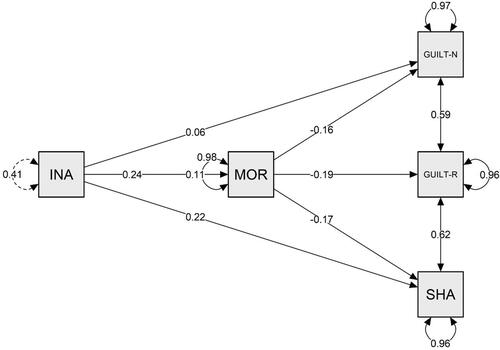Figures & data
Figure 1 Hypothetical model: Study 1 and Study 2.

Table 1 Reliability and Validity Indices of Study 1ʹs Instrument
Table 2 Reliability and Validity Indices of Study 2ʹs Instrument
Table 3 Descriptive Statistics
Table 4 Pearson Correlation Between Inauthenticity/Counterfeit Self, Moral Disengagement, and Proneness to Various Moral Emotions (N = 978)
Table 5 Mediation Analysis Showing Indirect Prediction of Inauthenticity/Counterfeit Self Towards Proneness to Various Moral Emotions Through Moral Disengagement (N = 978)
Figure 2 Visualization of mediation analysis results predicting moral emotions (N = 978).

Table 6 Simple Linear Regressions Predicting Inauthenticity/Counterfeit Self
